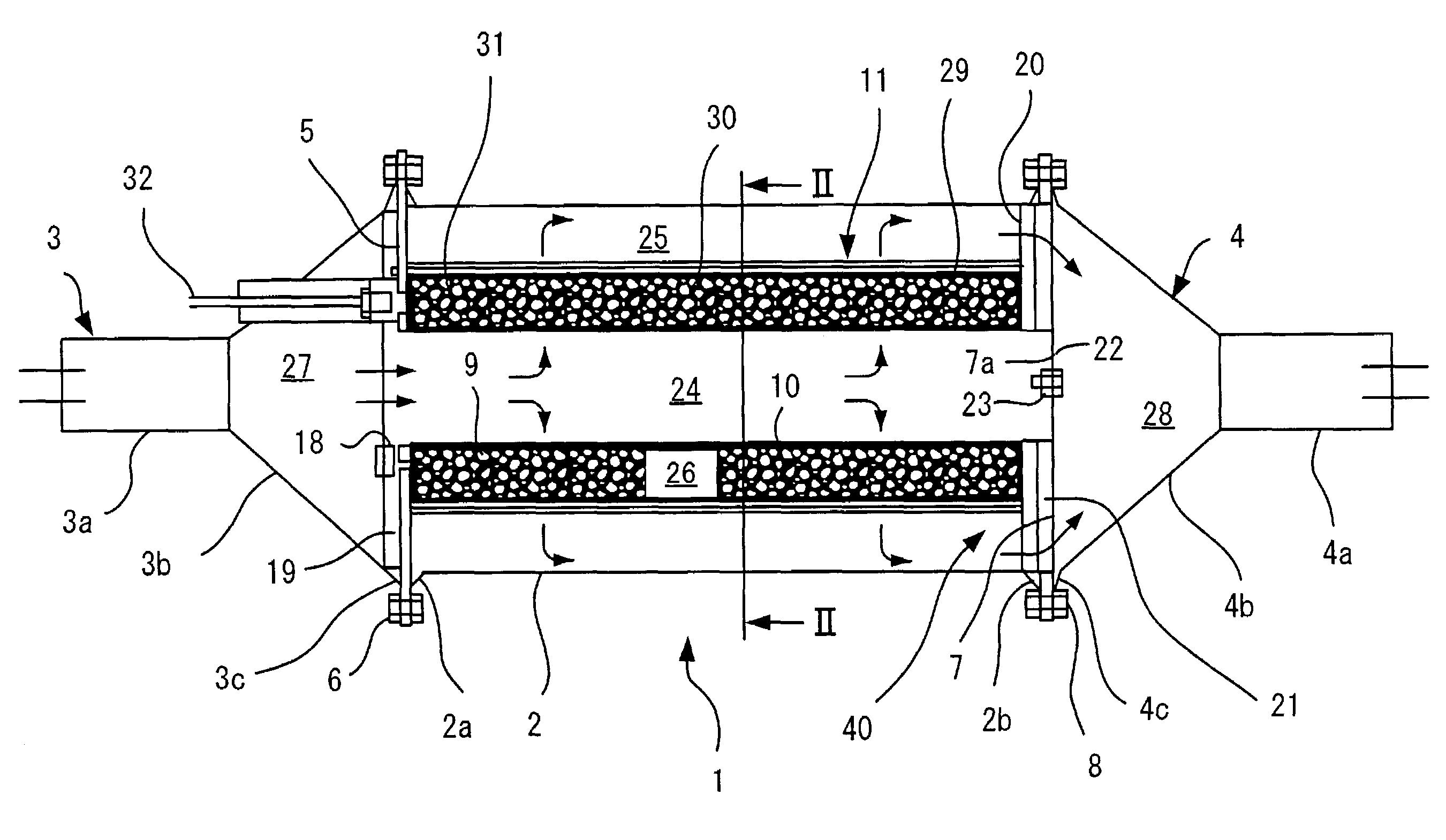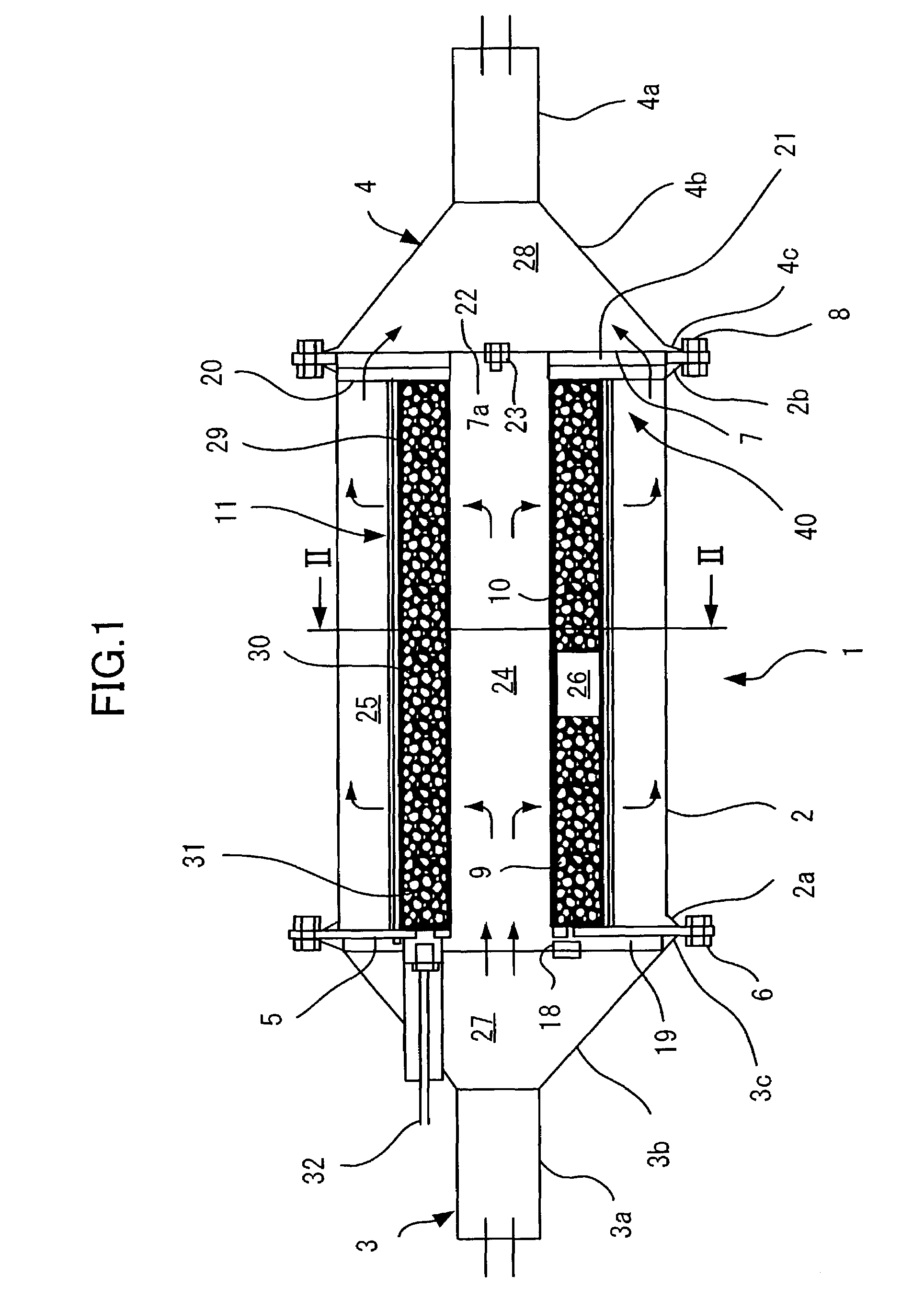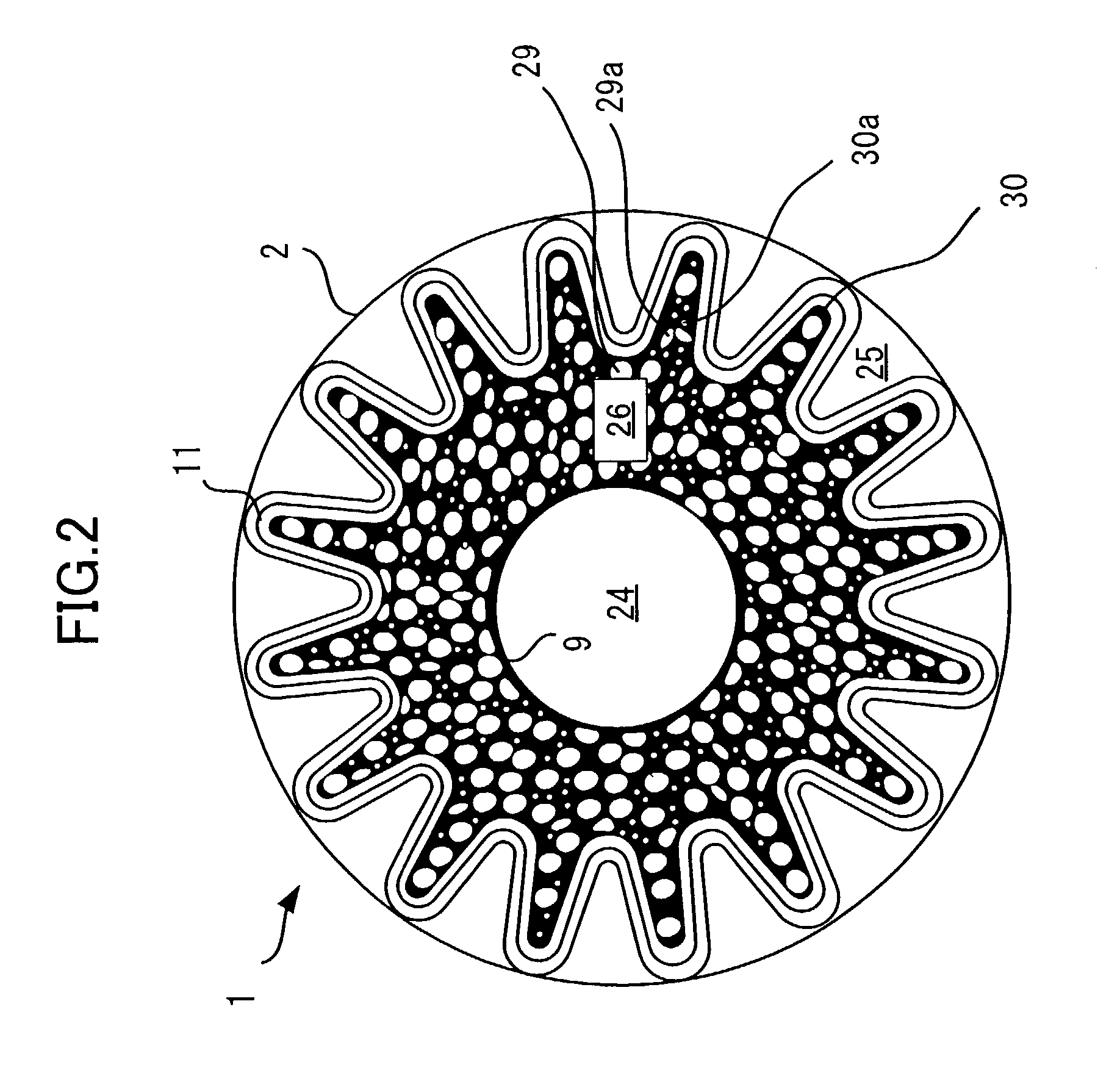Diesel engine particulate filter
a technology of particulate filter and diesel engine, which is applied in the direction of electrical power consumption to generate heat above 550 degrees centigrade, separation process, lighting and heating apparatus, etc., can solve the problem of contributing to the level of man-made air pollution, difficult to maintain the above temperature continuously, and significant electrical power consumption. achieve the effect of preventing burning reducing the amount of carbon fiber felt, and increasing the surface area of the filter
- Summary
- Abstract
- Description
- Claims
- Application Information
AI Technical Summary
Benefits of technology
Problems solved by technology
Method used
Image
Examples
Embodiment Construction
[0067]The present invention will hereinafter be described in detail with reference to the preferred embodiments shown in the accompanying drawings.
[0068]FIG. 1 is an axial sectional view of a diesel engine particulate filter embodying the concept of the present invention. In FIG. 1, the diesel engine particulate filter 1 formed of stainless steel comprises case cylinder 2, an exhaust stream entrance part 3 attached to the diesel engine side of case cylinder 2, and the exhaust stream exit part 4 is attached to the opposite end side of case cylinder 2.
[0069]Exhaust stream entrance part 3 comprises a small diameter exhaust pipe connection segment 3a which connects to the exhaust pipe side of a diesel engine, connecting expanded diameter segment 3b widens toward case cylinder 2 from exhaust pipe connection segment 3a, and flange segment 3c constructed with a number of bolt holes spreads radially outward to form the large diameter segment from the direction of connecting expanded diamete...
PUM
| Property | Measurement | Unit |
|---|---|---|
| temperature | aaaaa | aaaaa |
| temperature | aaaaa | aaaaa |
| temperatures | aaaaa | aaaaa |
Abstract
Description
Claims
Application Information
 Login to View More
Login to View More - R&D
- Intellectual Property
- Life Sciences
- Materials
- Tech Scout
- Unparalleled Data Quality
- Higher Quality Content
- 60% Fewer Hallucinations
Browse by: Latest US Patents, China's latest patents, Technical Efficacy Thesaurus, Application Domain, Technology Topic, Popular Technical Reports.
© 2025 PatSnap. All rights reserved.Legal|Privacy policy|Modern Slavery Act Transparency Statement|Sitemap|About US| Contact US: help@patsnap.com



